Local history: The night that Glendale Cemetery exploded
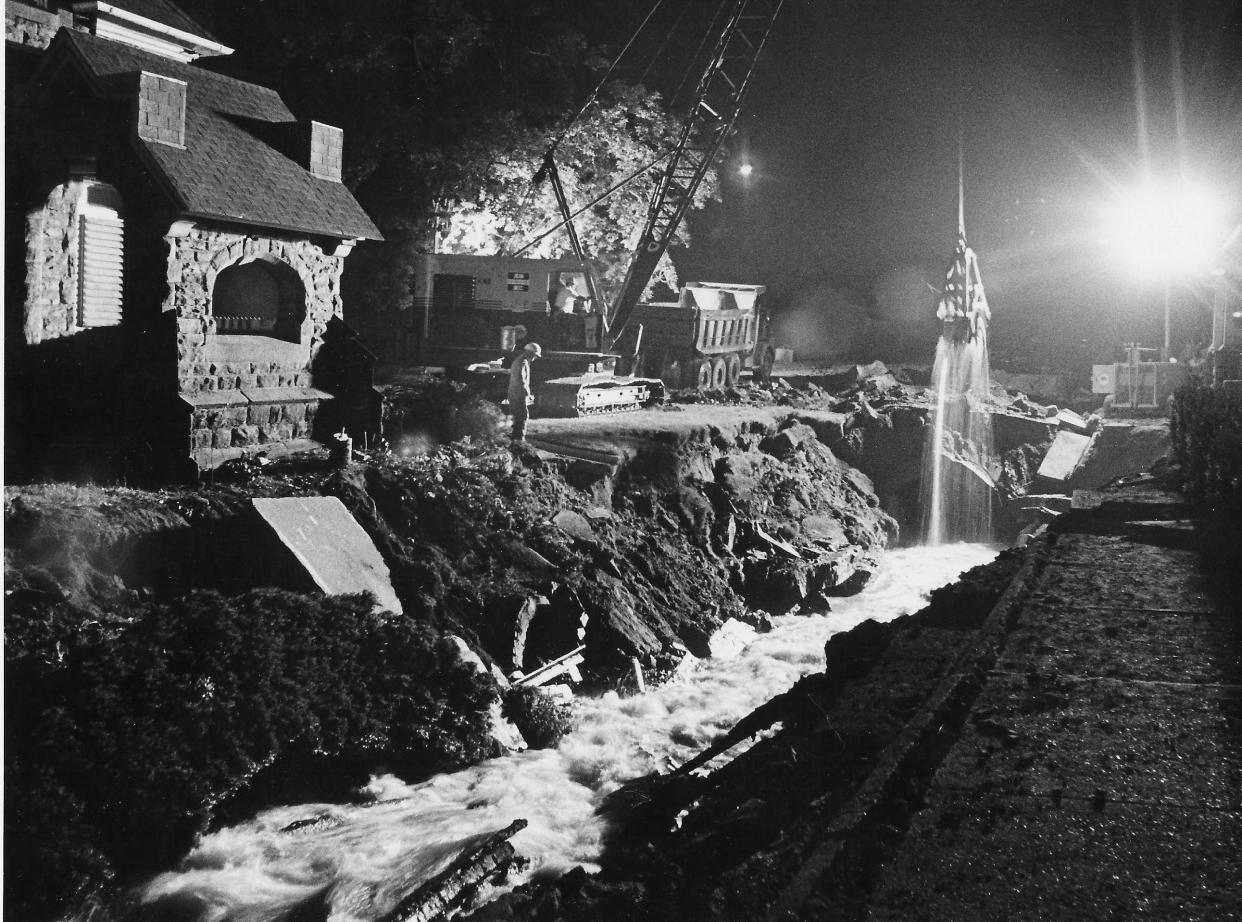
Darkness shrouded Glendale Cemetery. Nocturnal insects chirped delicate songs. All was calm and peaceful behind the closed gates.
Then the ground shook.
An ear-splitting explosion rocked the night, shattering glass, hurling projectiles, tossing bricks, collapsing roads and breaking waterlines. Utility covers popped like corks in the streets, flipping 6 feet into the air and landing with iron clangs. Bluish-white smoke poured out of maintenance holes.
More: Last two houses in downtown Akron to be demolished
The sewer blast at 2:20 a.m. June 23, 1977, awakened Akron residents for miles around, sending dazed neighbors outdoors in their pajamas.
Glendale superintendent Fritz Warren and his family were asleep in the caretaker’s home when the explosion blasted out six windows.
“The noise was incredible,” Warren told the Beacon Journal. “My wife, Paula, and I jumped out of bed and grabbed each other. Then we ran to our daughters’ room. They (Lisa, 7, and Jennifer, 3) were crying but not hurt.
“When I looked out the window to see what happened, all I could see was billowing smoke and a ditch big enough to drive a truck through. It wasn’t more than 15 feet from our bedroom window.”
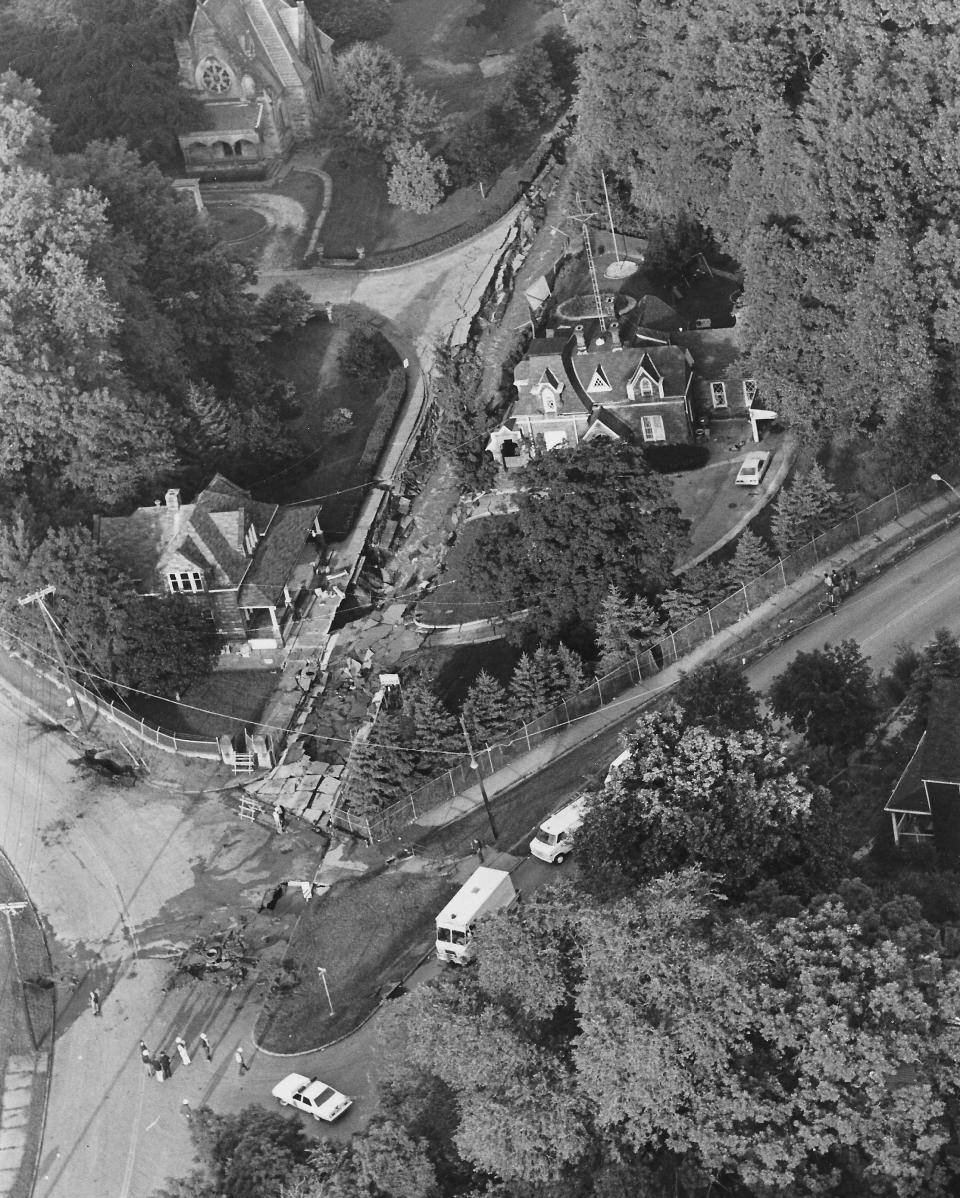
The driveway between their home and the cemetery office had been blown to smithereens, replaced by a surging stream about 15 feet below. In the early years of the 1839 cemetery, this had been Willow Brook, but the city enclosed it in 1920 and turned it into a 3,900-foot sewer line between West Market and West Exchange streets.
The explosion seriously damaged the buildings at the Glendale entrance and shattered some of the priceless, imported windows in the 1876 Civil War Memorial Chapel. Damage to the chapel was estimated at $100,000 (more than $440,000 today).
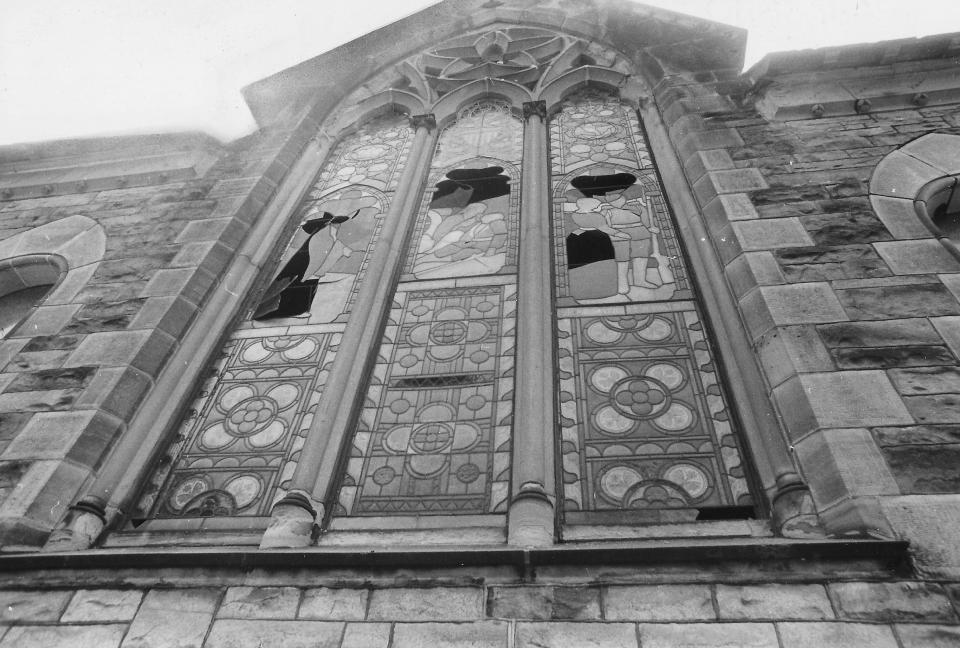
“I’ve never heard anything that loud in my life,” Warren said. “Thank God no one was hurt. Anything else can be repaired or replaced.
“If it had to happen, it happened at a good time. My kids play out there in the daytime and funeral processions come through there, too.”
Akron Patrolmen Mike Akers and Charles Fournier were in their cruiser on the north side of West Exchange near the back entrance of Glendale when their world went topsy-turvy. The blast occurred after they had stopped for a routine check of a business.
Akers ducked and Fournier floored the gas pedal, but the vehicle didn’t move — at least not initially — because the rear end had lifted 3 feet into the air. When the wheels fell back to earth, the car screeched across Exchange, narrowly averting a 25-foot crater.
Neither officer was hurt, but the men were shaken.
“Scared?” Akers said. “Man … to death!”
Homes evacuated in Akron
Authorities evacuated 70 homes along West Cedar Street, Bishop Street and Raasch Avenue. Officers went door to door to alert people. Residents fled in police wagons, cruisers, ambulances, buses and cars. Some stayed with friends or relatives while others found refuge at the Akron Armory, where the Salvation Army had set up a canteen. Evacuees were allowed to return the next day.
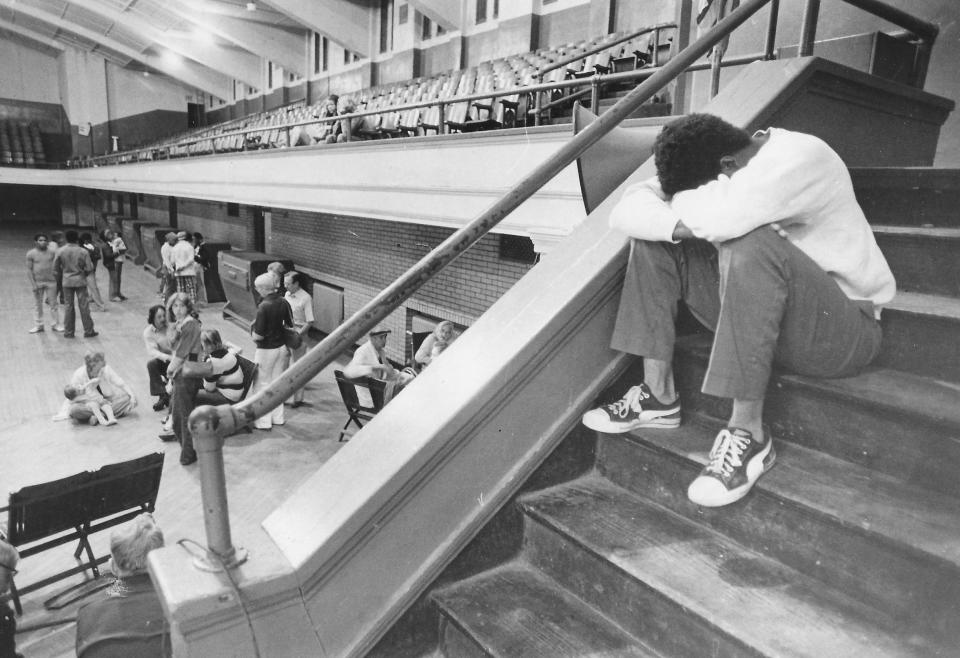
One after the other, residents shared their stories with reporters.
“I first thought it was a storm,” said Donald McCarty, 28, of West Cedar. “Then there was a loud boom and the house shook. There was a rumble in the ground that lasted 30 to 40 seconds.”
“I thought it was an earthquake,” said Josef Ritcher, 82, of West Cedar. “Then later, I thought it was a bomb going off. I was not afraid, but I prayed a little bit.”
“I woke up screaming,” said Kathleen Boxler, 57, of West Exchange. “I had no idea what happened. I live alone and the police were wonderful. They helped me a lot.”
“I saw two manholes in front of our house blown up,” said Anthony Lapinsky, 69, of West Exchange. “Smoke was coming out of the ground in front of the cemetery. The police got there quick. First, they told us to go inside and don’t smoke. Later, they came back and said evacuate the whole area.”
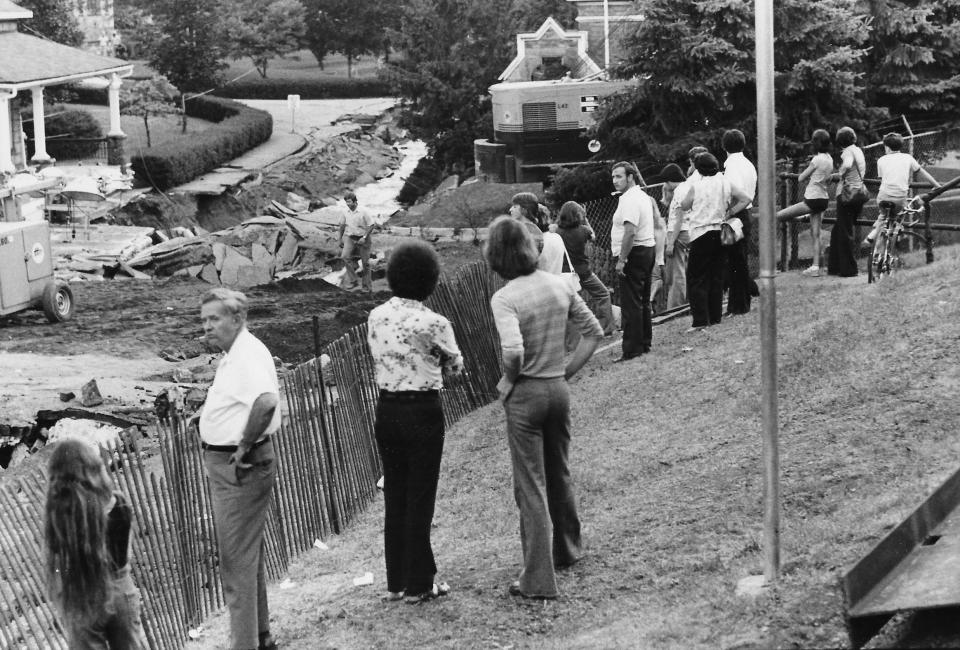
“I heard the ground tremble,” said Darrell Livingston, 16, who was walking home to Rhodes Avenue on Cedar Street when the blast occurred. “I stopped and then I heard an explosion and I saw manhole covers pop up 6 feet or higher. I was scared. After it was over, I started running.
“I saw people coming out of houses. They were yelling, ‘What happened?’ I said I just saw the ground blow up. I told one man I thought the world was coming to an end. People came running out of the houses wearing towels, blankets and their bloomers.”
In all, the explosion caused more than $12 million in damage (nearly $53 million today). While visiting Glendale Cemetery, Mayor John Ballard remarked: “It’s hard to understand something like this. It reminds me of World War II.”
The main road had been obliterated. In its place was an open ditch with rushing water.
Glendale employees reported that none of the 30,000 graves, tombs and mausoleums appeared to be damaged, even though sidewalks had collapsed within 15 feet of century-old mausoleums.
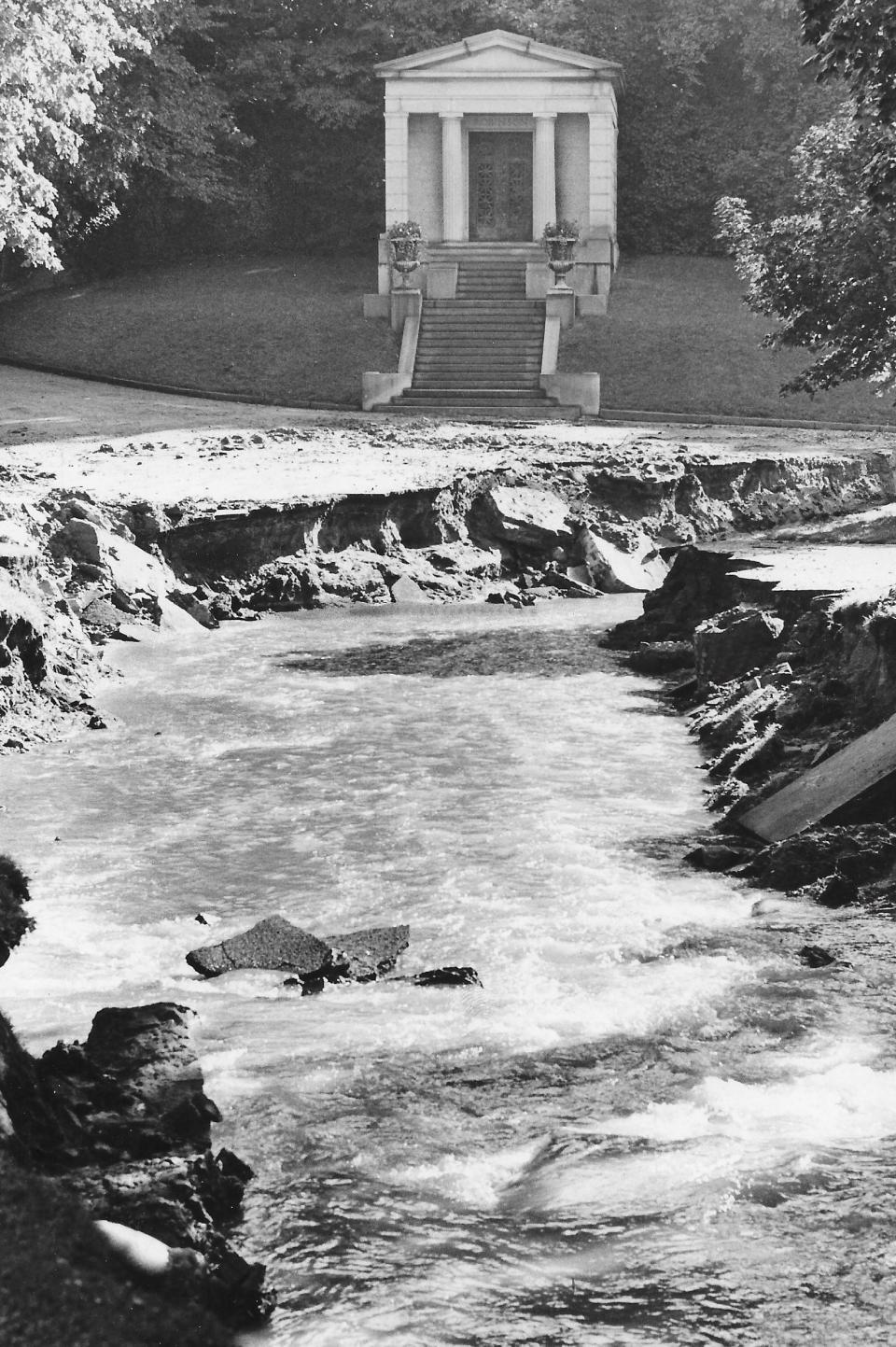
Four contractors worked around the clock to repair the streets surrounding the cemetery.
On June 28, Gov. James A. Rhodes declared the Akron sewer explosion a disaster and sent a request to President Jimmy Carter to provide federal money to help pay for the damage.
Suspect arrested in explosion
Investigators quickly pinpointed the cause of the blast — and, surprisingly, it originated 3.5 miles away from Glendale.
Deputy Fire Chief James Harris said someone broke into Patch Rubber Co. at 884 W. Waterloo Road and dumped solvents on the floor. About 3,000 gallons of petroleum naphtha and isopropyl alcohol poured into a storm drain.
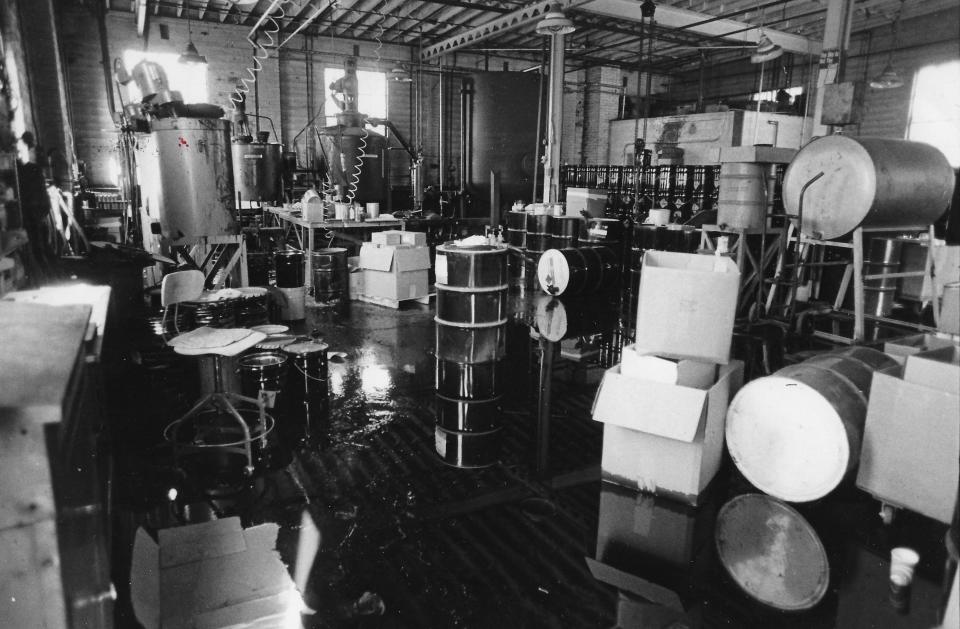
The flammable liquids flowed toward downtown, entered the sewer system and reached the trunk line at the cemetery. Harris suspected that another chemical in the sewer or a spark ignited the explosion. It may have been set off by the catalytic convert of the idling police cruiser on West Exchange.
The Akron Fire Department pumped 500 gallons of water a minute into the sewer from the Patch plant to dilute the mixture.
“This was a criminal act that could have resulted in deaths,” Mayor Ballard said. “I hope we’re able to bring to justice whoever the perpetrators prove to be.”
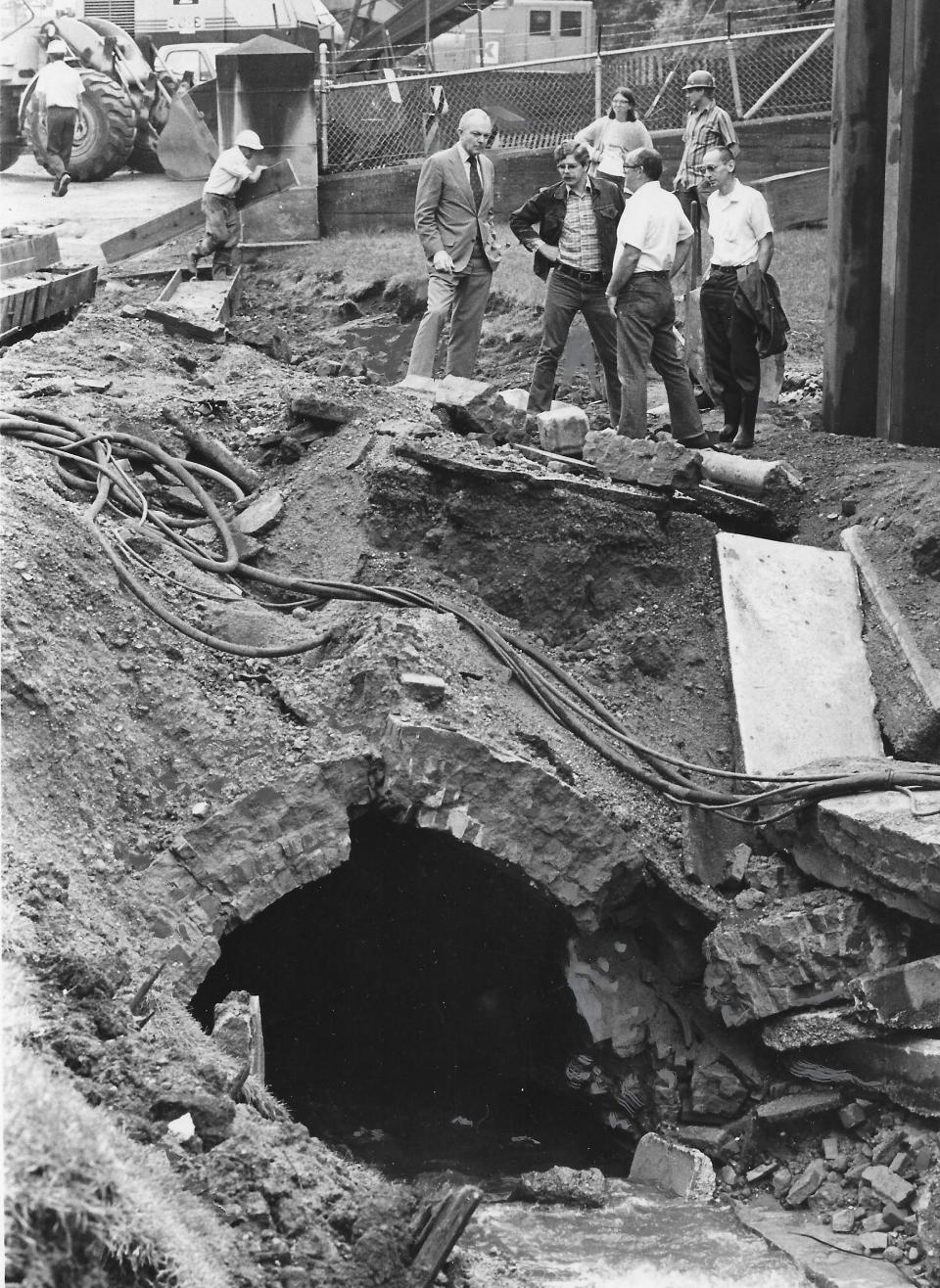
Louis Myers, president of Patch parent company Myers Industries, noted that the intruder had stuck a wrench in a nozzle and propped another nozzle open.
“Whoever broke into the building and turned on the valves knew exactly where to go and what to do,” Myers said.
Teamsters had been striking at the plant since May 19. Detectives interviewed more than 25 people and gave several of them lie detector tests during a four-day investigation.
The dragnet worked. Police arrested an 18-year-old worker who had been suspended before the strike.
The man pleaded guilty July 8 to vandalism and breaking and entering. He was sentenced Aug. 18 to two to 10 years in the Mansfield Reformatory, but served only 60 days before receiving “shock parole.”
Following the explosion, burials had to be delayed for more than a week at Glendale. Portions of West Cedar and West Exchange remained blocked for nearly two years.
West Exchange businesses Town and Country Car Wash, Summit Typewriter & Office Machine and Akron Vitrolite and Tile Inc. suffered more than $260,000 in damage.
Other local businesses, such as Iacomini’s restaurant, suffered a drop in customers because of traffic disruptions.
In May 1978, the Ruhlin Construction Co. began work on a $3 million sewer line for Willow Run at Glendale Cemetery. City, state and federal funds were used to pay for reconstruction.
Heavy machinery rumbled around as crews dredged the ditch, diverted the water, graded the soil, installed concrete culverts, added reinforcement beams, buried the line and paved a new drive through the cemetery. The project took more than a year.

In September 1979, traffic returned to normal on West Exchange and West Cedar streets. Calm was restored at the cemetery.
The occupants of Glendale could finally rest in peace.
Mark J. Price can be reached at mprice@thebeaconjournal.com.
1972: The year that rocked the Rubber Bowl
Vintage photos: 50 memorable Cleveland TV personalities
Local history: Old age pension was glimmer of hope in 1934
This article originally appeared on Akron Beacon Journal: The night that Glendale Cemetery exploded

